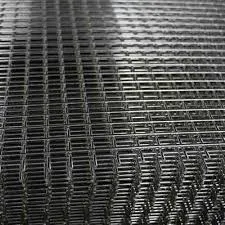-
+86 15030157877
-
sales@galvanizedmetalmesh.com
lis . 23, 2024 18:18 Back to list
low carbon steel wire manufacturers
Low Carbon Steel Wire Manufacturers An Overview
Low carbon steel, characterized by its low carbon content (typically less than 0.3%), is a fundamental material utilized across various industries. It is particularly favored for its excellent ductility, malleability, and weldability. The manufacturing of low carbon steel wire has become increasingly important due to its wide-ranging applications, including construction, automotive, and general manufacturing. In this article, we will explore the role of low carbon steel wire manufacturers, their production processes, and the significance of this versatile material in today’s market.
The Role of Low Carbon Steel Wire Manufacturers
Low carbon steel wire manufacturers play a crucial role in supplying the raw material needed for countless applications. From reinforcing concrete to creating wire products like fences, springs, and automotive components, these manufacturers are integral to the global supply chain. They ensure that the low carbon steel wire meets the stringent standards required by various industries, including mechanical properties, tensile strength, and corrosion resistance.
To meet the diverse needs of the market, manufacturers often produce a range of wire products in different diameters, grades, and finishes. Customization is also common, as customers may require specific tensile strength or coatings to enhance durability and performance.
Production Processes
The production of low carbon steel wire typically involves several key steps. Firstly, steel billets are manufactured from iron ore through processes such as basic oxygen furnace (BOF) or electric arc furnace (EAF) methods. The choice of method depends on the scale of production and the desired quality of the steel.
low carbon steel wire manufacturers

Once the billets are produced, they undergo hot rolling or cold drawing processes to achieve the desired wire diameter. Hot rolling involves heating the steel above its recrystallization temperature, allowing for easier manipulation and shaping. In contrast, cold drawing pulls the steel through a series of dies at room temperature, which increases its strength through strain hardening.
The next step is annealing, a heat treatment process that improves the wire's ductility and reduces its hardness. This is crucial for applications that require flexibility and ease of installation, such as in constructions and wire rope manufacturing. Depending on customer requirements, manufacturers may also apply surface treatments like galvanization, which provides corrosion resistance, enhancing the wire's longevity.
Market Significance
The significance of low carbon steel wire in the market cannot be overstated. Its applications span multiple sectors in construction, it is used for reinforcing concrete structures; in automotive, it is found in springs and cables; and in agriculture, it is utilized for fencing and trellising. The versatility of low carbon steel wire makes it a preferred choice for engineers and builders alike.
Moreover, as sustainability becomes increasingly important, many manufacturers are adopting more environmentally friendly production practices. This includes recycling scrap steel and minimizing waste during the production process. The shift towards low-carbon technologies is not just a trend; it is becoming a necessity in ensuring the future viability of the steel industry.
Conclusion
In conclusion, low carbon steel wire manufacturers are vital players in the global manufacturing landscape. Their ability to produce high-quality wire that meets diverse industrial needs supports a wide range of applications, contributing significantly to various sectors. As industries evolve and focus on sustainability, these manufacturers must continue to innovate and adapt, ensuring that low carbon steel wire remains a cornerstone of modern engineering and construction. With ongoing advancements in production techniques and materials, the future for low carbon steel wire looks promising.
-
Premium Hexagonal Gabion Mesh Solutions | Durable & Eco-Friendly
NewsAug.03,2025
-
Smart AI Fence Solutions with GPT-4 Turbo | Secure & Fast
NewsAug.02,2025
-
Welded Gabion Solutions: Durable & AI-Enhanced Designs
NewsAug.01,2025
-
Premium Welded Gabion Mesh | Robust & Eco-Friendly
NewsJul.31,2025
-
Premium Eco-Friendly Roof Tiles | Affordable & Durable
NewsJul.31,2025
-
Premium Roof Tiles for Durable & Stylish Roofing Solutions
NewsJul.30,2025



